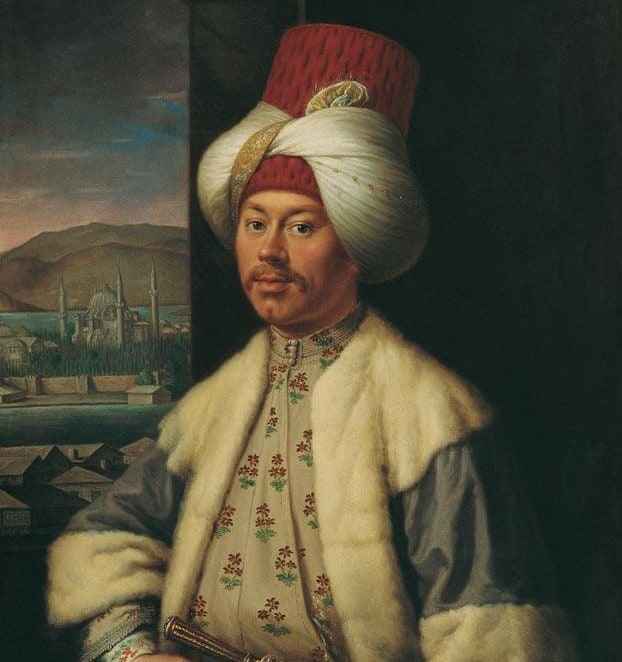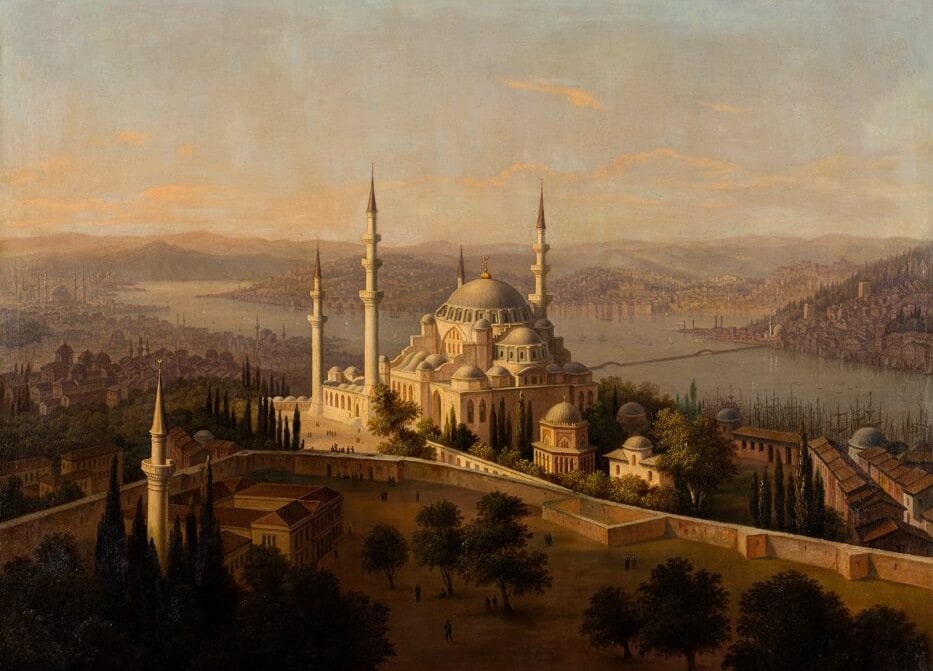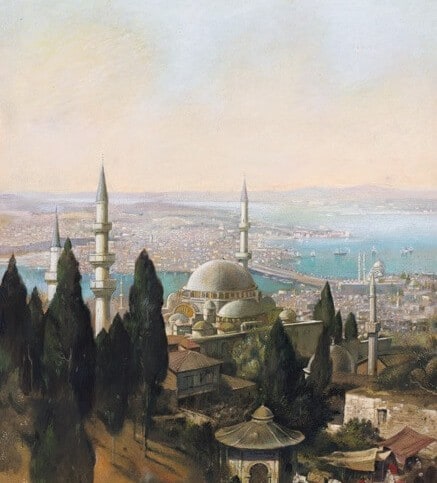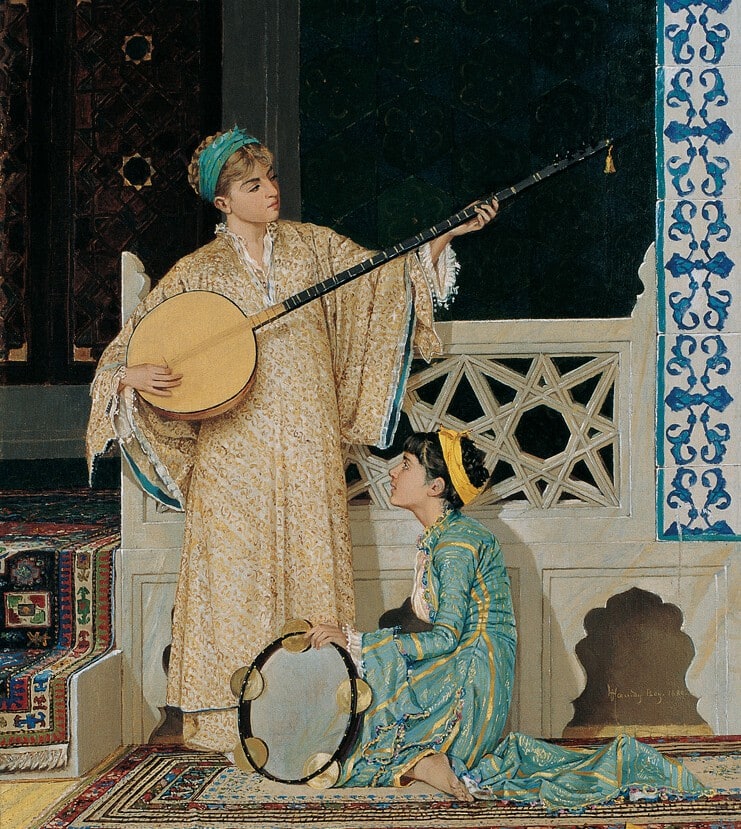12 March 2018
In the works of western painters, we encounter mosques as the primary architectural elements that reflect the identity of the city of Istanbul. Often we can recognize the depicted landscape as Istanbul simply from the mosques. Even when the details do not match the reality, the mosques that have been occasionally illustrated with exaggerated features in the horizon or by the sea inform us that the setting is indisputably Istanbul. In the paintings of daily life an intriguing contrast is established for the western painter when these majestic monuments that are meant to display the power of the empire are presented alongside the people on the street. The details captured from the architecture of a mosque, for instance if it is in one of the paintings of an orientalist such as Osman Hamdi, can be the most valuable resource in recreating traditional Ottoman sites.
We have prepared a selection for you from the sceneries found in the Suna and İnan Kıraç Foundation Orientalist Painting Collection!

The painting depicts the passage of a European ambassadorial delegation, escorted by Ottoman dignitaries, along the hills of the Pera district of Istanbul. The ambassador, who has been placed in a quasi-central position in the foreground, is seen riding a white horse near Galata Cemetery. This painting is part of a series by Vanmour, part of this exhibition, depicting the phases of the reception of the same ambassador. The ambassador depicted in this series could be the Venetian Bailo Francesco Gritti, who served in Istanbul between 1723 and 1726. In the foreground there is a company of janissaries, on the left a group of people watching the procession, while in the background Golden Horn covered with sailing-boats, Süleymaniye Mosque and Bozdoğan Aqueduct are visible. On the bottom left corner a signature on a stone is visible: Vanmour pinxit.


Berninger had the opportunity to visit İstanbul and observe the architectural monuments and the people of the city firsthand. Therefore, it is quite possible that he created this painting later, based on the sketches he made and the notes he took during his stay in the city. The architectural details and the environs of the mosque, which is placed at the center of the composition and should technically represent Süleymaniye due to its location in the city, are not realistic. Nonetheless, the artist succeeds in creating a convincing image of İstanbul by bringing together the city’s topography, architecture, and various aspects of its life. Berninger has a very similar painting in oil, in which he depicts the cityscape of İstanbul from a panoramic perspective. All the details of the watercolor are used identically in the oil painting; the composition has been expanded by the addition of a second mosque to the right, and the street with the fountain at the foreground is moved to the right and centered.
 Yıldız (Hamidiye) Mosque, Émile de L’isle-Adam Villiers, Between 1886 and 1889, Watercolor on paper, 46 x 67 cm.
Yıldız (Hamidiye) Mosque, Émile de L’isle-Adam Villiers, Between 1886 and 1889, Watercolor on paper, 46 x 67 cm.
Although he is regarded as an Orientalist painter, Osman Hamdi Bey’s perception of the East is remarkably different his Western counterparts. As opposed to the Western Orientalists who emphasize sexuality in their female figures, in Osman Hamdi Bey’s paintings the female figures are often conscious of the period of Westernization in the Ottoman Empire, as well as their individual identities and talents, and are thus open to learning and self-development. In a number of Osman Hamdi Bey’s works, the Ottoman woman is portrayed while playing an instrument, reading, or arranging the flowers in her house and she always appears fully clothed. In this painting, which incorporates architectural elements of the Bursa Green Mosque, apart from musical instruments like the tambur (lute) and the tambourine, Ottoman decorative elements such as rugs, woodwork, stone carving, and tiles complement the artist’s unique approach to the female identity.


When regarding the paintings of Istanbul by western painters, Golden Horn has a distinctive place and value. This body of water that separates the Topkapı Palace and the Historical Peninsula, in which monumental edifices are located, from Galata, where westerners and foreign embassies dwell, is as though an interpenetrating boundary.
Tuesday - Saturday 10:00 - 19:00
Friday 10:00 - 22:00
Sunday 12:00 - 18:00
The museum is closed on Mondays.
On Wednesdays, the students can
visit the museum free of admission.
Full ticket: 300 TL
Discounted: 150 TL
Groups: 200 TL (minimum 10 people)